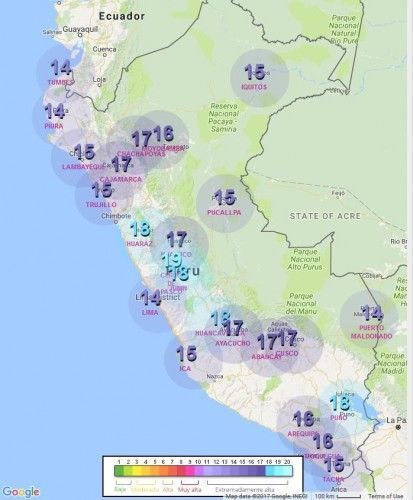Innately Peru is one of the countries worldwide with the highest solar radiation. For February this year, however, extreme UV radiation levels are expected, so that the National Service of Meteorology and Hydrology (Senamhi) already strongly advises citizens to take precautionary measures.
While the UV radiation tans our skin, produces vitamin D in our bodies and makes most of us feel good, too much sun on our skin can be extremely dangerous. Being exposed to high levels of UV radiation promotes skin aging, DNA damage, eye damage and malignant changes of our skin including skin cancer.
As Senamhi expects that the UV index in February in Peru will be between 14 and 20, levels described as extremely high and dangerous, it is highly recommended to protect yourself with sun block all the time, even on cloudy days, wear sunglasses, cover exposed skin and best avoid outdoor activities and sun exposure between 10.00 am and 03.00 pm.
What is the UV Index
The UV Index is an international standard measurement of the intensity of the ultraviolet (UV) radiation at a particular time and place. The World Health Organization (WHO) has classified the radiation index into five risk categories as follows:
(Please have a look at the below attached PDF)



